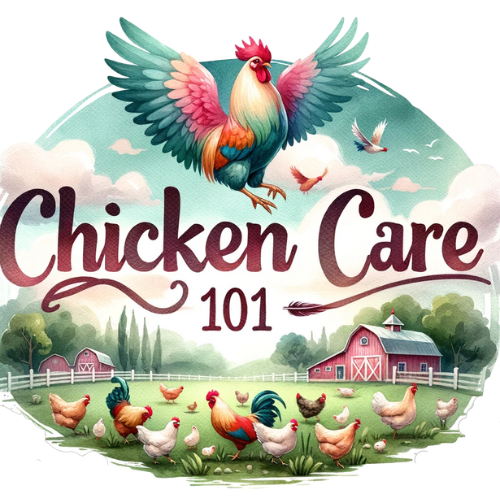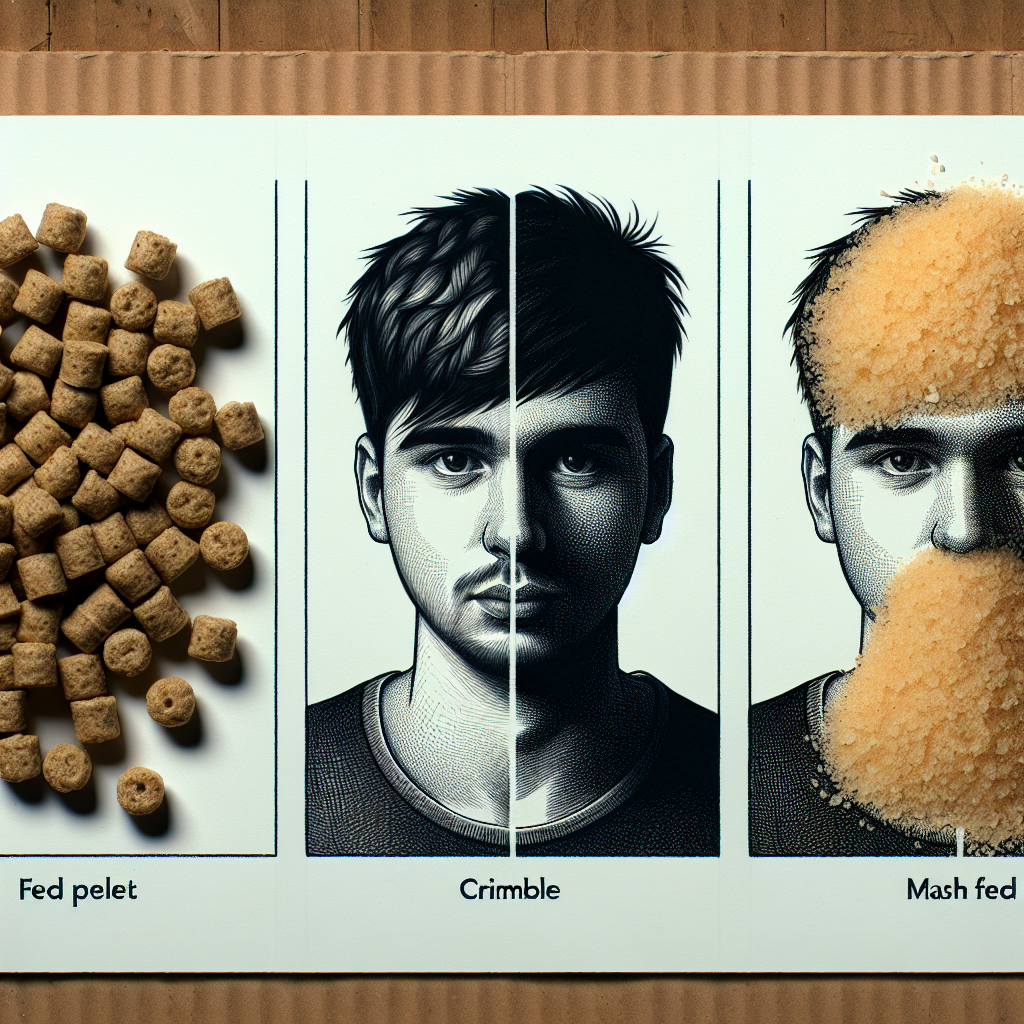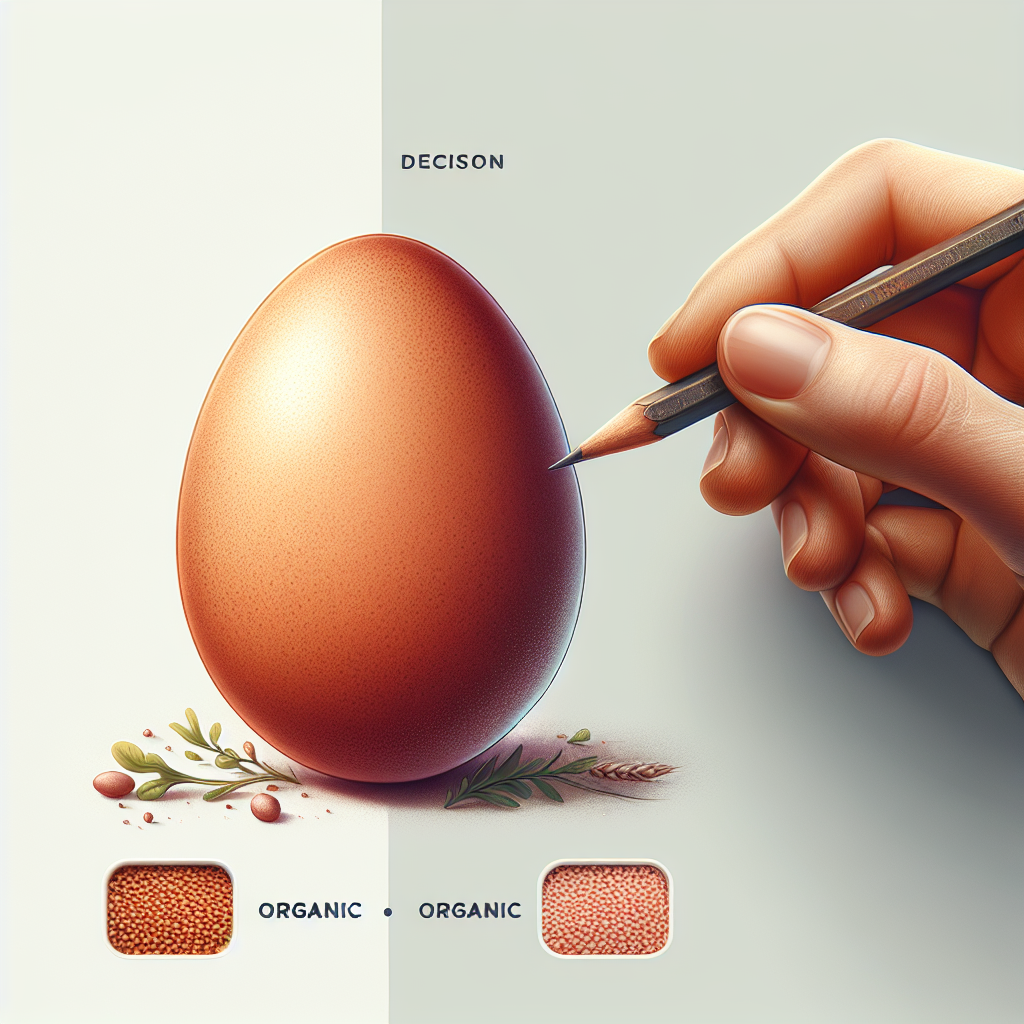Have you ever wondered about the cost differences between pellet, crumble, and mash feed types? Well, today we are going to shed some light on this intriguing topic. Whether you are a farmer looking for the most cost-effective option or simply curious about the economics of animal feed, we’ve got you covered. By exploring the pricing variations and advantages of each feed type, you’ll gain a better understanding of which option suits your needs and budget. So, let’s delve into the world of pellet, crumble, and mash feeds and find out how their costs compare.
Overview of Pellet, Crumble, and Mash Feeds
What are pellet feeds?
Pellet feeds are a type of animal feed that have been processed into small, cylindrical pellets. These pellets are made by compressing the ingredients under high pressure, which helps to improve the density and durability of the feed. Pellet feeds are a popular choice for livestock and poultry because they offer greater convenience in handling and provide a more balanced diet for the animals.
What are crumble feeds?
Crumble feeds are similar to pellet feeds but are processed into smaller, irregularly shaped particles. The texture of crumble feeds is softer and more finely ground, making them easier for animals with smaller mouths (such as young or small-sized animals) to consume. Crumble feeds are often used in the early stages of animal growth, where a finer texture is preferred for optimal digestion.
What are mash feeds?
Mash feeds are the most basic form of animal feed and consist of a combination of ground or crushed ingredients. Unlike pellet and crumble feeds, mash feeds are not processed into compacted shapes. Mash feeds offer a more coarse texture, which can be advantageous for animals that have higher chewing requirements, such as ruminants. Mash feeds are commonly used in on-farm mixing and for feeding animals that have specific dietary needs.
Importance of choosing the right feed type for animals
Selecting the appropriate feed type for animals is crucial for their overall health, growth, and productivity. Different animals have distinct dietary requirements, varying taste preferences, and different processing capabilities. By understanding the specific needs of the animals, farmers and animal caretakers can make informed decisions about the type of feed that will provide the best nutrition and support optimal growth.
Factors Affecting Feed Costs
Raw materials
The cost of raw materials has a significant impact on the overall feed costs. The availability, quality, and price of ingredients such as grains, protein sources, and supplements can fluctuate based on factors like weather conditions, global market trends, and trade policies. The cost of raw materials directly affects the formulation of feeds and plays a vital role in determining the price of the final product.
Processing methods
Different processing methods incur various costs. Pelleting, crumbling, and mashing all require specialized equipment and machinery, which come with their respective operational and maintenance expenses. The complexity of the processing method also influences labor requirements, energy consumption, and overall production efficiency, all of which contribute to the feed costs.
Quality of ingredients
The quality of ingredients used in feed production can impact the overall costs. High-quality ingredients may be more expensive, but they can enhance the nutritional value and palatability of the feed. Additionally, using premium ingredients can lead to better animal performance and health, potentially reducing expenses related to veterinary care and medication.
Market demand
Market demand for different types of feed can influence feed costs. If a particular feed type is in high demand or has limited availability, the price may increase due to scarcity. On the other hand, if there is an oversupply of a certain feed type, prices may be driven down. Monitoring market trends and understanding consumer preferences can help optimize feed purchasing strategies and manage costs effectively.
Brand reputation
Feed costs can also be influenced by brand reputation. Established and reputable feed manufacturers often invest in research and development, ensuring high-quality products with consistent nutrient levels. Such brands may have higher prices compared to generic or lesser-known alternatives. While the initial investment may be higher, choosing reputable brands can provide peace of mind in terms of feed quality, resulting in improved animal performance and reduced long-term costs.
Pellet Feed Costs
Raw material costs
The costs of raw materials for pellet feeds depend on the specific ingredients used in the formulation. Grains, such as corn and wheat, along with protein sources like soybean meal and fishmeal, contribute to the overall cost. The availability of these ingredients in the market and their prices can impact the production cost of pellet feeds.
Processing costs
Pellet feed production involves the use of pellet mills, which require capital investment and significant operational costs. The running costs of the pellet mills, including energy consumption, maintenance, and labor, contribute to the overall processing costs. Additionally, the complexity of the pelletizing process compared to crumble or mash feeds may result in slightly higher processing expenses.
Equipment and machinery costs
The specialized equipment and machinery used for pelleting feed add to the overall costs. Pellet mills, hammer mills, and other machinery needed for ingredient grinding, mixing, and conditioning can be expensive to acquire and maintain. The costs associated with these equipment investments need to be factored into the total cost of producing pellet feeds.
Additional costs
Pellet feed production may incur additional costs such as packaging, storage, transportation, and overhead expenses. These costs may vary depending on the scale of production, local regulations, and individual business operations.
Cost efficiency of pellet feed
The cost efficiency of pellet feeds can vary depending on factors such as the local market conditions, availability and costs of raw materials, and the scale of production. Pellet feeds have certain advantages, such as improved feed conversion, reduced feed wastage, and better nutrient utilization by animals. These benefits can contribute to cost savings in the long run, offsetting the initial higher cost compared to other feed types.
Crumble Feed Costs
Raw material costs
Similar to pellet feeds, crumble feed costs depend on the prices and availability of specific ingredients used in the formulation. However, the finer texture of crumble feeds may require additional processing steps or more finely ground ingredients, which can impact the overall raw material costs.
Processing costs
Crumble feed production involves grinding ingredients into smaller particles and adding binders to form the loose, irregularly shaped crumbles. The expenses associated with grinding, mixing, adding binders, and subsequent cooling or drying processes contribute to the processing costs of crumble feeds.
Equipment and machinery costs
The equipment and machinery required for producing crumble feeds may differ slightly from those used in pelleting or mashing. The grinding equipment, mixers, and cooling/drying systems specifically designed for crumble feed production need to be considered when evaluating the costs.
Additional costs
As with pellet feeds, crumble feed production may have additional costs related to packaging, storage, transportation, and other operational expenses. These costs can vary depending on the individual business operations and market requirements.
Cost efficiency of crumble feed
Crumble feeds offer advantages such as ease of consumption for young or small-sized animals, improved digestibility, and reduced feed wastage. These factors can lead to better animal performance and cost savings in terms of improved feed conversion and reduced veterinary care expenses. Considering these benefits, crumble feeds can be cost-effective choices for specific animal types and growth stages.
Mash Feed Costs
Raw material costs
The raw material costs for mash feeds are similar to those of pellet and crumble feeds. However, since mash feeds do not require the additional processing steps of pelleting or crumble formation, the overall raw material costs may be slightly lower.
Processing costs
Mash feed production involves grinding and mixing the ingredients without the need for additional processing equipment or steps. The absence of pelleting or crumbling processes in mash feed production can potentially result in lower processing costs compared to those associated with pellet or crumble feeds.
Equipment and machinery costs
Mash feed production generally requires simpler equipment for grinding and mixing compared to pelleting and crumbling. This simplicity in equipment needs can lead to lower capital investment and maintenance costs.
Additional costs
Additional costs related to packaging, storage, transportation, and other operating expenses may apply to mash feed production depending on the specific business operations and market requirements.
Cost efficiency of mash feed
Mash feeds offer simplicity and versatility in their production process. While they may not provide the same benefits in terms of enhanced feed conversion or reduced feed wastage as pellet or crumble feeds, their lower processing costs can contribute to overall cost efficiency.
Comparison of Feed Costs
Raw material cost comparison
When comparing the raw material costs of pellet, crumble, and mash feeds, it is essential to consider the specific formulation requirements and ingredient availability. The pricing and availability of different raw materials can vary, impacting the overall raw material costs of each feed type.
Processing cost comparison
Pelleting involves a more complex process compared to crumble or mash feed production, requiring additional equipment and energy. The processing costs of crumble feeds may fall between those of pellets and mash feeds. Mash feeds generally have lower processing costs due to their simple production process.
Equipment and machinery cost comparison
Pelleting requires specialized equipment, which may have higher capital investment and maintenance costs compared to crumble or mash feed production. Crumble feeds may require additional equipment or modifications compared to mash feeds. Mash feed production generally requires simpler equipment, potentially resulting in lower equipment and machinery costs.
Additional cost comparison
Packaging, storage, transportation, and other operational expenses can vary depending on the individual business operations and market requirements for each feed type. Comparing these additional costs is crucial to evaluating the overall cost-effectiveness of different feed types.
Overall cost comparison
The overall cost comparison between pellet, crumble, and mash feeds depends on several factors, including raw material costs, processing costs, equipment and machinery costs, and additional costs. Determining the most cost-effective feed type requires a comprehensive assessment of these factors alongside the specific nutritional requirements, growth stage, and performance goals of the animals being fed.
Considerations for Choosing the Right Feed Type
Animal species and age
Different animal species have unique dietary needs and digestive capabilities. Younger animals may require feeds with finer textures or specific nutrient profiles to support their growth and development. Considering the specific species and age of the animals is essential when selecting the appropriate feed type.
Nutritional requirements
Understanding the nutritional requirements of animals is crucial for selecting the right feed type. Different animals have varying protein, carbohydrate, fat, vitamin, and mineral needs, which should be met through their diets. Analyzing the nutrient composition of different feed types can help ensure optimal nutrition for the animals.
Digestibility and feed conversion
The digestibility and feed conversion rates of different feed types can impact the overall cost-effectiveness. Feeds that are easily digested and efficiently converted into energy or growth support can contribute to better feed efficiency and reduced feed wastage.
Feeding preferences
Animals may have different feeding preferences and behaviors. Some may be more inclined to consume pelleted feeds, while others may prefer crumble or mash feeds. Considering the feeding preferences of the animals can help promote better feed intake and minimize feed losses.
Health and growth performance
The overall health and growth performance of animals are influenced by their diets. Selecting the appropriate feed type can help support optimal health, immune function, and growth rates, potentially reducing the need for additional veterinary care or treatments.
Cost-Effectiveness and Feed Efficiency
Feed conversion ratio
The feed conversion ratio, which measures the amount of feed consumed in relation to the weight gained, is a critical factor in evaluating feed efficiency and cost-effectiveness. Different feed types can have varying impacts on feed conversion ratios, with improved ratios resulting in reduced feed costs per unit of weight gain.
Growth rate and weight gain
The growth rate and weight gain of animals are primary indicators of feed efficiency. Well-formulated feeds that support optimal growth rates can contribute to improved cost-effectiveness by minimizing feed wastage and reducing the time required to reach desired market or production weights.
Health and immune system
Feeds that provide optimal nutrition and support immune system function can lead to healthier animals. Improved health can result in lower medication or veterinary care costs, making the overall feed costs more manageable.
Feed wastage
Reducing feed wastage is crucial for cost-effective feeding strategies. Pellet and crumble feeds, due to their compact and less crumbly nature, can help minimize feed losses compared to mash feeds. Careful management of feed distribution and minimizing spillage or spoilage can further enhance cost-efficiency.
Comparing cost per unit of nutrition
When comparing the cost-effectiveness of different feed types, considering the cost per unit of essential nutrients or energy provided by the feeds is important. Evaluating the nutrient content and digestibility of the feeds can help determine the most cost-efficient choice for meeting animal nutritional requirements.
Factors Influencing Feeding Strategies
Species-specific dietary habits
Different animal species have distinct dietary preferences and habits. Understanding these habits, such as feeding patterns and foraging behaviors, helps develop appropriate feeding strategies and minimize feed losses.
Feed storage and handling
Proper feed storage and handling practices are essential to prevent spoilage, contamination, and nutrient degradation. Ensuring appropriate storage conditions, including temperature and humidity control, can help maintain feed quality and reduce waste.
Feeding management practices
Effective feeding management practices, such as controlled feeding routines and portion control, can optimize feed utilization and minimize feed losses. Monitoring feed intake, adjusting feeding schedules, and providing adequate access to clean water contribute to efficient feeding practices.
Environmental impact
Environmental considerations, such as waste management and sustainability, play a vital role in feeding strategies. Implementing practices to minimize nutrient runoff or waste disposal can help protect natural resources and reduce environmental impact.
Industry trends and innovations
Keeping up with industry trends and advancements in feed manufacturing and formulation can provide valuable insights for optimizing feeding strategies. Staying informed about emerging technologies, improved ingredient sources, and innovative production techniques can aid in selecting the most cost-effective and sustainable feed options.
Conclusion
Summary of cost comparisons
When comparing pellet, crumble, and mash feeds, various factors impact feed costs, including raw materials, processing methods, equipment and machinery costs, additional expenses, and overall cost efficiency. Each feed type has its own advantages and considerations, which should be evaluated alongside the specific needs of the animals and the goals of the farming operation.
Considerations for selecting feed types
Selecting the right feed type involves considering factors such as animal species and age, nutritional requirements, digestibility, feeding preferences, and health and growth performance. By understanding these considerations, farmers and animal caretakers can optimize feed selection to support optimal animal nutrition, growth, and production outcomes.
Importance of evaluating cost-effectiveness
Evaluating the cost-effectiveness of different feed types is crucial for efficient feeding strategies. Factors such as feed conversion ratio, growth rate, health and immune system support, minimizing feed wastage, and comparing cost per unit of nutrition can help determine the most cost-efficient choice for meeting animal nutritional requirements and achieving production goals.
Future prospects and advancements
The field of animal nutrition is continuously evolving, with ongoing research and advancements in feed manufacturing and formulation techniques. Keeping up with future prospects, emerging trends, and technological innovations can lead to improved feed cost optimization and enhanced animal performance in the years to come.




